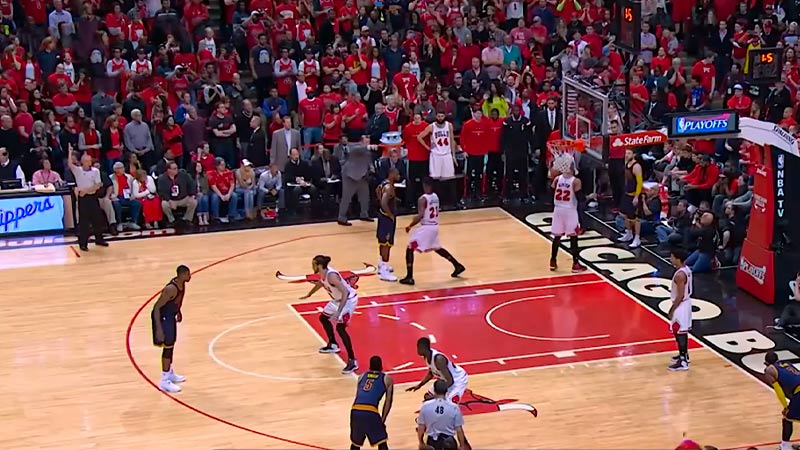Understanding advanced statistics in basketball is crucial for comprehending a player’s impact on the game beyond traditional box score numbers. One such metric gaining prominence in the NBA and other basketball leagues is Plus/Minus.
While points, rebounds, and assists provide valuable insights into individual performance, Plus/Minus offers a more comprehensive evaluation of a player’s influence on their team’s success.
In this blog post, we will delve into the concept of Plus/Minus in basketball, explaining its significance, how it is calculated, and why it matters in the context of team dynamics and player evaluation.
What is Plus/Minus in Basketball?
Plus/Minus is a statistical metric used in basketball to evaluate a player’s impact on the team’s performance during their time on the court. It measures the point differential when a player is playing, comparing the team’s performance when the player is on the court to when they are off.
When the team scores more points than their opponents while a player is in the game, their Plus/Minus value increases positively. Conversely, if the opposing team outscores the player’s team during their minutes on the court, the Plus/Minus value decreases negatively.
This metric helps coaches and analysts understand a player’s overall influence on the team’s success, going beyond traditional individual statistics. A positive Plus/Minus indicates a player contributes to the team’s success, while a negative value suggests the opposite.
What Is The Plus/Minus Metric?
The Plus/Minus metric, commonly known as +/-, is a statistical measure used in team sports, particularly in basketball and ice hockey, to assess a player’s impact on the team’s performance while they are on the court or ice. The concept is straightforward: it tracks the point differential when a specific player is in the game.
In basketball, for example, if a player’s team outscores their opponents by 10 points during the time that player is on the court, their Plus/Minus for that game would be +10.
Conversely, if the opposing team outscores the player’s team by 5 points during their playing time, their Plus/Minus for that game would be -5.
The Plus/Minus metric provides a more holistic view of a player’s contributions beyond traditional individual statistics, as it reflects how well the team performs with that player on the court or how much they might struggle in their absence.
How to Calculate Plus/Minus?

Source: knickscentral.com
To calculate Plus/Minus in basketball, you’ll need the box score data for a specific game. Here’s a step-by-step guide on how to do it:
Gather the Data
Obtain the box score for the game you want to analyze. The box score should include the points scored by each team and each player’s playing time.
Calculate the Team’s Plus/Minus
Find the point differential for the entire game by subtracting the opposing team’s total score from your team’s total score. For example, if your team scored 100 points and the opposing team scored 90 points, the point differential would be +10 (100 – 90).
Identify Each Player’s Plus/Minus
Look at the player’s on-court time during the game. Add up the points scored by the player’s team while they were on the court and subtract the points scored by the opposing team during the same time.
Calculate Individual Plus/Minus
Take the player’s on-court point differential and subtract the team’s overall point differential. This will give you the individual Plus/Minus for that player.
For example, if the team’s overall point differential was +10, and a player had a point differential of +5, then their individual Plus/Minus would be +5 (5 – 10).
Positive Plus/Minus indicates the player had a positive impact on the team’s performance, while negative Plus/Minus suggests the player’s presence on the court resulted in a net deficit for the team.
The Relevance of Plus/Minus in NBA

Source: spieltimes.com
Plus/Minus is a relevant and valuable statistical metric in the NBA for several reasons:
Overall Impact
Plus/Minus provides a broader perspective on a player’s impact beyond traditional statistics like points, rebounds, or assists. It accounts for a player’s influence on the team’s performance as a whole, taking into consideration both offensive and defensive contributions.
Team Efficiency
It reflects how well a team performs when a specific player is on the court. Players with positive Plus/Minus values often contribute to better team efficiency, as they help their team outscore opponents during their playing time.
Lineup Evaluation
Plus/Minus is useful for evaluating the effectiveness of specific player combinations. Coaches can identify which lineups work well together and make informed decisions about rotations and substitutions.
Defensive Impact
While individual defensive statistics can be limited, Plus/Minus helps gauge a player’s defensive effectiveness by measuring how they impact their team’s defensive performance.
Contextual Performance
Plus/Minus considers game context and the strength of opponents. A player might have a lower Plus/Minus when facing strong opponents, which can provide insight into how they perform against tougher competition.
Bench Player Assessment
Plus/Minus is particularly valuable for assessing bench players’ impact, as they might not accumulate high individual statistics but can significantly influence the game when they come off the bench.
Longitudinal Analysis
Over a series of games, Plus/Minus data can reveal consistent patterns and trends about a player’s impact and contribution to the team’s success.
However, it’s essential to acknowledge that Plus/Minus has its limitations. It can be influenced by various factors, including teammates’ performance, opponent strength, and game situations.
Therefore, it is often best used in conjunction with other advanced metrics and traditional statistics to obtain a comprehensive evaluation of a player’s overall performance.
Why Plus/Minus Measurement Is Essential?
The Plus/Minus measurement is essential for several reasons in basketball:
Team Contribution Assessment
Plus/Minus provides a holistic view of a player’s impact on the team’s performance. It assesses how much a player contributes to the team’s success or struggles while they are on the court.
Beyond Individual Statistics
While traditional statistics like points and rebounds focus on an individual’s performance, Plus/Minus evaluates how well the team performs as a whole when a specific player is in the game. It captures both offensive and defensive contributions.
Efficiency Indicator
Plus/Minus reflects a player’s efficiency on the court. Players with positive Plus/Minus values often make more positive plays than negative ones, leading to a net gain for their team.
Lineup Optimization
Coaches can use Plus/Minus to evaluate the effectiveness of different player combinations. It helps identify lineups that work well together and those that might need adjustments.
Impact on Winning
Ultimately, the goal of basketball is to win games. Plus/Minus correlates closely with a team’s success. Players with consistently positive Plus/Minus values are usually key contributors to their team’s victories.
Bench Player Evaluation
Plus/Minus is particularly useful for evaluating bench players who might not accumulate high individual statistics but can significantly impact the game positively when they are on the court.
Influence on Game Flow
Plus/Minus can reveal how a player affects the ebb and flow of a game. Players who consistently boost their team’s performance when they enter the game can be crucial assets.
Defensive Contribution
It helps gauge a player’s defensive effectiveness by considering their role in the team’s overall defensive performance.
Longitudinal Analysis
By analyzing Plus/Minus over multiple games, trends, and patterns in a player’s performance can emerge, providing insights into their consistency and overall impact.
While Plus/Minus is an essential metric, it is essential to interpret it alongside other advanced statistics and traditional performance indicators to obtain a comprehensive understanding of a player’s overall contribution and effectiveness.
It serves as a valuable tool for coaches, analysts, and fans alike to better grasp a player’s impact beyond individual statistics and to make informed decisions regarding player rotations and team strategy.
FAQs
What is Plus/Minus in basketball?
Plus/Minus, often denoted as +/−, is a statistical metric used in basketball to measure a player’s impact on their team’s performance during the time they are on the court. It compares the point differential when a player is playing to when they are off the court.
A positive Plus/Minus indicates that the player’s team outscored the opponents during their playing time, while a negative value suggests the opposing team had the advantage.
How is Plus/Minus calculated?
To calculate Plus/Minus, you need the box score data for a specific game. First, find the point differential for the entire game by subtracting the opposing team’s total score from your team’s total score.
Then, identify each player’s Plus/Minus by adding up the points scored by their team and subtracting the points scored by the opposing team while they were on the court.
Finally, calculate the individual Plus/Minus by subtracting the team’s overall point differential from the player’s on-court point differential.
What does a positive Plus/Minus indicate?
A positive Plus/Minus suggests that a player contributes positively to their team’s success while they are on the court. It means their team outscored the opponents during their playing time, making them an asset to the team’s performance.
Is Plus/Minus a reliable metric to evaluate players?
While Plus/Minus is a valuable metric, it has its limitations. It can be influenced by various factors such as teammates’ performance, opponent strength, and game situations.
As such, it is best used in combination with other advanced statistics and traditional performance indicators for a comprehensive player evaluation.
How can coaches use Plus/Minus data?
Coaches can utilize Plus/Minus data to evaluate player combinations and lineup effectiveness. It helps identify lineups that work well together and those that need adjustments.
Additionally, it assists in making informed decisions regarding player rotations and team strategy based on the impact each player has on the game.
Wrapping Up
Plus/Minus is a vital statistical metric in basketball that goes beyond individual performance, providing insights into a player’s impact on the team’s success during their time on the court.
It offers a holistic view of a player’s contributions to both offensive and defensive aspects of the game. While it’s not without limitations, Plus/Minus remains an essential tool for coaches, analysts, and fans to better understand a player’s role in the team and their overall influence on the game’s outcome.
As basketball analytics continue to evolve, Plus/Minus stands as a valuable measurement that enhances our understanding of the sport and the dynamics that shape winning teams.







